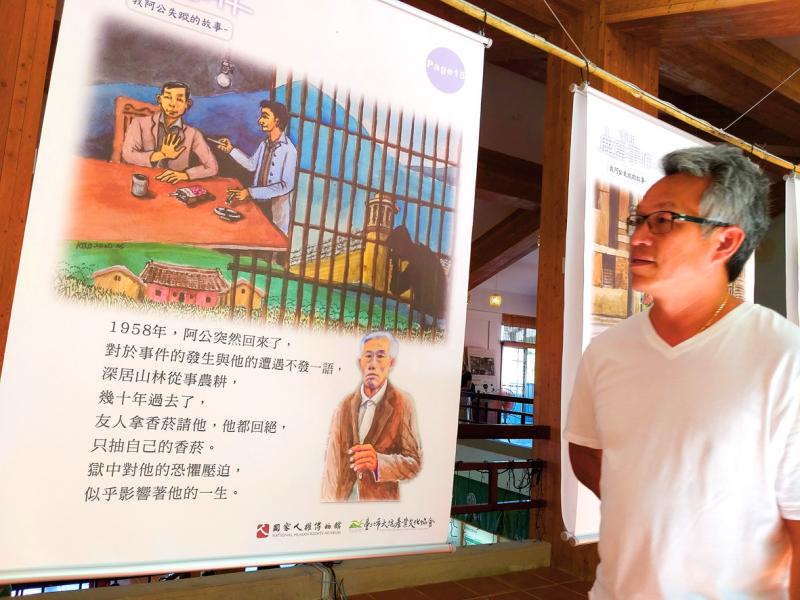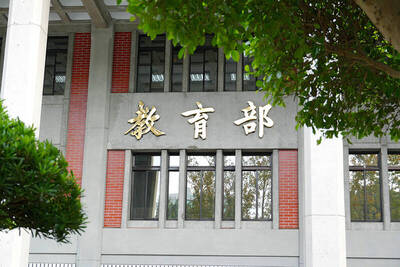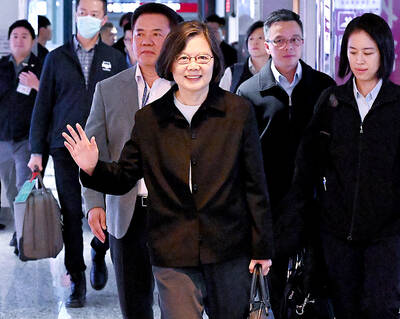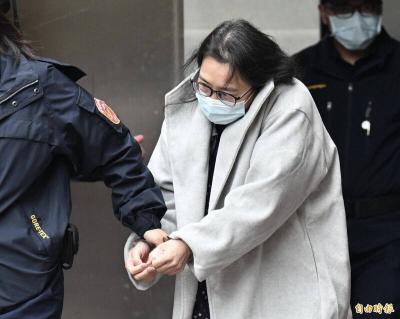The story of Luku Incident (鹿窟事件) victim Pan Ping-hui (潘炳輝), one of hundreds arrested during the White Terror era, is the focus of an exhibition at a tea factory in Taipei’s Nangang District (南港).
Chen Chun-hung (陳俊宏), director of the National Human Rights Museum, which organized the event, said the exhibition at the Nangang Tea Processing Demonstration Center, also known as the Taipei Tea House, is designed to keep the memories of the Luku Incident alive.
The 1952 incident refers to the arrest of more than 400 farmers and miners by the former Counterintelligence Bureau, which believed that there were underground communist organizations operating in what is now New Taipei City’s Shihding District (石碇), after it discovered the roster for a militia called the Northern Region Armed Committee.

Photo: Chen Yu-hsun, Taipei Times
Many of those arrested confessed to “crimes” after being tortured, and the number of people involved, along with some who were underage, marked the incident as the largest case of political oppression during the White Terror era.
Pan Shih-hsien (潘世賢) said his grandfather, Pan Ping-hui, never knew why he was arrested, and that his grandfather and father were reluctant to discuss it.
“My grandfather wasn’t well off and often had to promise to pay someone back when making purchases, especially pork,” he said, adding that at the time, people signed their names to certify that they owed money.
The bureau used a book of names from a shop as a list of communists in the area, and arrested all 50 people on the list, he said.
Pan Ping-hui was held for eight years, and then he was afraid to interact with people and so moved to the mountains to live alone, Pan Shih-hsien said.
“After the incident, my grandfather always refused any offer of even a cigarette, because he worried that it was a ploy to get him,” he said.
Pan Shih-hsien said he suspected that his grandfather had been tortured, as Pan Ping-hui’s fingernails were uneven.
His grandfather only started to talk about his past after the government offered redress on the issue, he said.
Pan Shih-hsien said his grandfather always told him not to speak about the government or politics, which Pan Shih-hsien said showed just how much his grandfather’s experience had scarred him.
The exhibition features works by artist Kao Teng-li (高燈立), including renditions of the Luku Incident memorial, Formosan sika deer, nearby mountains and other imagery that Kao said he had drawn from research and Pan Ping-hui’s recount of the incident.
Kao, a Luku resident, said that although he was not a descendant of any victim, he remembered villagers telling him to run if he saw a waishengren (外省人), a term referring to people who fled to Taiwan with the Chinese Nationalist Party (KMT) regime in 1949.
Kao said this showed the psychological trauma that had been inflicted on the previous generation.
The exhibit is free of charge and lasts until Nov 29.

The Ministry of Education (MOE) is to launch a new program to encourage international students to stay in Taiwan and explore job opportunities here after graduation, Deputy Minister of Education Yeh Ping-cheng (葉丙成) said on Friday. The government would provide full scholarships for international students to further their studies for two years in Taiwan, so those who want to pursue a master’s degree can consider applying for the program, he said. The fields included are science, technology, engineering, mathematics, semiconductors and finance, Yeh added. The program, called “Intense 2+2,” would also assist international students who completed the two years of further studies in

Former president Tsai Ing-wen (蔡英文) departed for Europe on Friday night, with planned stops in Lithuania and Denmark. Tsai arrived at Taiwan Taoyuan International Airport on Friday night, but did not speak to reporters before departing. Tsai wrote on social media later that the purpose of the trip was to reaffirm the commitment of Taiwanese to working with democratic allies to promote regional security and stability, upholding freedom and democracy, and defending their homeland. She also expressed hope that through joint efforts, Taiwan and Europe would continue to be partners building up economic resilience on the global stage. The former president was to first

Taiwan will now have four additional national holidays after the Legislative Yuan passed an amendment today, which also made Labor Day a national holiday for all sectors. The Chinese Nationalist Party (KMT) and Taiwan People’s Party (TPP) used their majority in the Legislative Yuan to pass the amendment to the Act on Implementing Memorial Days and State Holidays (紀念日及節日實施辦法), which the parties jointly proposed, in its third and final reading today. The legislature passed the bill to amend the act, which is currently enforced administratively, raising it to the legal level. The new legislation recognizes Confucius’ birthday on Sept. 28, the

The Taipei District Court sentenced babysitters Liu Tsai-hsuan (劉彩萱) and Liu Jou-lin (劉若琳) to life and 18 years in prison respectively today for causing the death of a one-year-old boy in December 2023. The Taipei District Prosecutors’ Office said that Liu Tsai-hsuan was entrusted with the care of a one-year-old boy, nicknamed Kai Kai (剴剴), in August 2023 by the Child Welfare League Foundation. From Sept. 1 to Dec. 23 that year, she and her sister Liu Jou-lin allegedly committed acts of abuse against the boy, who was rushed to the hospital with severe injuries on Dec. 24, 2023, but did not